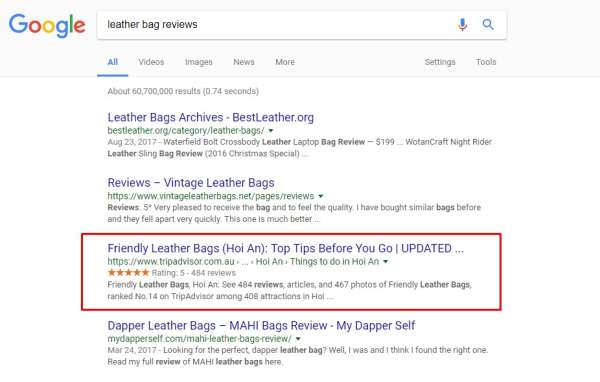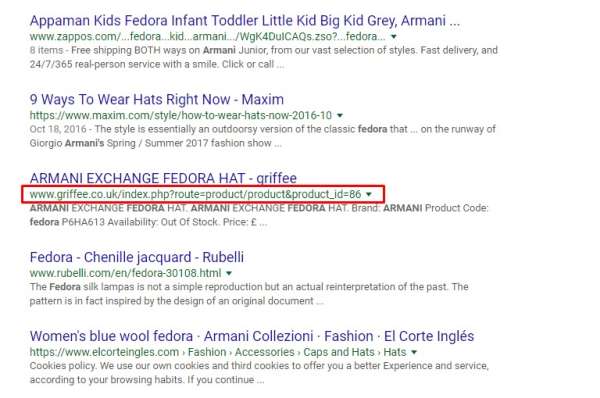The goal of every E-commerce site owner is simple. Make money by selling killer products online.
Of course, executing this is easier said than done, and there are plenty of pitfalls to avoid along the way. If you want to improve your bottom line, you’re going to need to do some research.
The success (or failure) of your E-commerce site depends on how well optimized it is for search engines. SEO has proven time and again, that it’s one of the most cost-effective ways to increase traffic and conversions. Without regular shoppers visiting your site, you’re leaving money on the table!
What is preventing your site from ranking higher on Google and Bing? Avoid these common E-commerce SEO mistakes by implementing the following tips!
Learn how to avoid common #Ecommerce #SEO mistakes in order to boost your rankings AND sales! Share on XImprove Your Load Times
How fast your E-commerce site loads can make or break your business. Studies show that 25% of shoppers will leave your site if takes more than 4 seconds to load!
Even if you’re selling the best product on the market, you won’t be able to generate a profit with a slow site speed.
Not to mention, site speed is a Google ranking factor both for desktop and mobile!
GTmetrix is one of our favorite tools to use to learn what’s slowing down your page load times. We even did a case study with them!
If your E-commerce site is on WordPress, try some of these plugins to supercharge your site’s performance. If you’re going with a dedicated E-commerce platform, 3dcart wrote a great guide on what makes the best ecommerce platform for SEO.
Write Better Product Descriptions
Strangely enough, some E-commerce sites write product descriptions that don’t describe the product at all.

Popular brands like Gap should be able to write descriptions in their sleep!
For more examples of mediocre product descriptions, click here.
While this description shares the specs of the cardigan, it fails to generate shoppers interest. No one buys a cardigan just because it “hits below the hip.” Descriptions that are both persuasive and informative grow sales.
To improve your SEO, always include a target keyword in your descriptions. Ideally, your description should have a minimum of 300 words, and the keyword should be added in naturally. Doing so will dramatically increase your chances of organically ranking your products.
Generate More Customer Reviews
Word of mouth is one of the most effective way to increase sales.
In fact, studies have shown that over 64% of shoppers look at customer reviews when deciding whether or not to make a purchase. Featuring customer reviews on your product pages can also increase conversion rates by 74%!
User-generated content helps search engines determine the authority of your page. So when you attract positive reviews, your SEO will improve.
Find ways to encourage shoppers to leave reviews, so you can experience increased sales and rankings.
'Generating more user reviews for your product pages can increase their #SEO performance.' Share on XEnable Schema Markup
Getting your site on the first page of Google can be a time consuming and difficult task. Employing schema markup is a bit of a tricky one, but definitely worth looking into.
It has other downstream benefits as well. It’s even possible to get a 30% increase in CTR if you successfully implement a structured markup like Schema microdata.
Take a look at the above SEP for “leather bag reviews.” I’ve highlighted a search result that contains a star rating.

This kind of tactic can help your result stand out from the pack. The review stars (and many other features) are usually best implemented via schema markup.
For more info on how to get your feet wet, here’s a beginner’s guide.
Eliminate Duplicate Content
E-commerce sites are prone to duplicate content. External duplicate content can be caused by the CMS you use.
For example, some CMS’s can’t discern the same product URL in different categories. Copying and pasting the same content to similar pages can also cause errors.
It’s worth the time to dive in and remove instances of duplicate content by rewriting them. Search engines devalue pages when they detect that the content isn’t original, even if the duplicated content is on your own website!
Figuring out which pages are tagged as duplicate content can be a pain. If you can afford it, we recommend using a tool that can automate the heavy lifting, like Screaming Frog SEO Spider.
Make URLs User-Friendly
By default, most CMS’s do not provide structured URLs for your page. But there are a ton of benefits to optimizing your URL structure. Not the least of which that it’s still considered a notable ranking factor.
Start by ensuring your target keyword is clearly included in the URL. You also want to aim for having a simple and concise a URL as possible.
The reason to keep it simple is that it helps customers more easily navigate your site. “Siloing” or grouping related content together in categories and subcategories can make a big difference.

For WordPress users, it’s easy to change your permalinks to show words instead of numbers or symbols. Once that’s done, check out the best practices for your site’s URL.
Consider Optimizing for Voice Search
As technology evolves for the better, it continually shapes consumer habits.
According to the latest study by Google, around 20% of US mobile search is now done through voice searches.
It’s thus hard to argue that voice search could change the SEO industry quite dramatically in the coming years.
To take advantage of the already existing opportunities (and future proof your ecommerce site) it’d be wise to consider optimizing for voice search.
There are a number of ways to do this, but one central theme is considering question-based keywords. This stands to reason as people typically frame voice-queries in the form of a question.
So start your keyword research on queries that start with who, what, when, where, why, and how.
Conclusion
This list of common e-commerce SEO mistakes may seem tough at first, but once you get familiar with the process, it’s not so bad.
And of course, even if you follow all of the steps above, you’ll still want to make sure that you choose the best ecommerce platform to suit your particular business needs.
Considering these mistakes can all be easily avoided, there’s no excuse for not improving your SEO and content marketing and letting your e-commerce site languish in the rankings.
Just follow the above tips for properly optimizing your site, and start reaping all of the benefits of an SEO-friendly online store!








